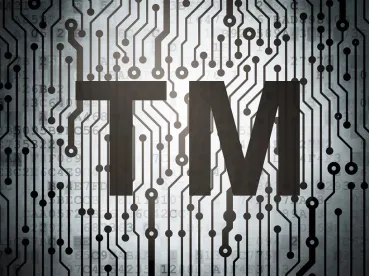In a case that may have a major impact on trademark litigation across the country, the Supreme Court decided on June 28, 2019 to grant certiorari in Romag Fasteners, Inc., v. Fossil, Inc., et al., in which Romag has asked the high court to resolve a circuit court split over the question of whether a finding of willfulness is required to disgorge a defendant’s profits from trademark infringement. For many intellectual property practitioners, this appeal may call to mind the Supreme Court’s landmark 2014 decision in Octane Fitness, LLC v. ICON Health & Fitness, Inc., in which the court adopted a more flexible framework for allowing attorney fee awards in patent cases – a standard that has since been widely adopted in trademark cases as well. (Octane Fitness was itself inspired by a trademark case, Noxell Corp. v. Firehouse No. 1 Bar-B-Que Restaurant, 771 F. 2d 521 (D.C. Cir. 1985).) If the Court were to take a similar approach here and hold that willfulness is merely a factor to consider in equitably disgorging an infringer’s profits (rather than a prerequisite) it would be a significant victory for brand owners, and would likely encourage an increase in enforcement efforts against accused infringers.
Romag’s appeal followed from a Connecticut district court’s decision to strike a $6.8 million jury verdict disgorging Fossil’s profits from sales of accused counterfeit handbag fasteners in the absence of a finding of willful infringement. The Federal Circuit upheld the decision, applying Second Circuit law to find that a threshold determination of willfulness was a prerequisite to the disgorgement. In opposing certiorari, Fossil argued that various procedural defects barred relief, but the fact that the Supreme Court is taking the case suggests that it intends to resolve the underlying merits of the circuit split.
Although trademark plaintiffs are entitled to seek recovery for their own actual injury, it has long been recognized that quantifying a trademark plaintiff’s lost sales and lost brand value can be difficult, and that disgorging some or all of the defendant’s profits may be the only way to compensate the plaintiff, and prevent infringers from gaining unjust windfalls. In the Second, Eighth, Ninth, Tenth, and District of Columbia Circuits, the courts have concluded that in order to equitably disgorge the defendant’s profits, the plaintiff must first prove that the defendant acted willfully. By contrast, in the Third, Fourth, Fifth, Sixth, Seventh, and Eleventh Circuits, willfulness is not a prerequisite to equitable disgorgement, but rather merely one factor. For example, in Banjo Buddies, Inc. v. Renosky, 399 F.3d 168 (3d Cir. 2005), the Third Circuit adopted a test that weighs factors that “include, but are not limited to (1) whether the defendant had the intent to confuse or deceive, (2) whether sales have been diverted, (3) the adequacy of other remedies, (4) any unreasonable delay by the plaintiff in asserting his rights, (5) the public interest in making the misconduct unprofitable, and (6) whether it is a case of palming off.” The First Circuit requires a finding of willfulness where the plaintiff has not shown that it directly competes with the defendant, and hence was unlikely to have suffered lost sales.
Much of the confusion over the willfulness requirement stems from a 1999 Amendment to Section 35 of the Lanham Act, which resulted in adding a requirement that violations of Section 1125(c) (the dilution statute) must be willful to merit monetary relief:
“When a violation of any right of the registrant of a mark registered in the Patent and Trademark Office, a violation under section 1125(a) or (d) of this title, or a willful violation under section 1125(c) of this title, shall have been established…the plaintiff shall be entitled…subject to the principles of equity, to recover (1) defendant’s profits, (2) any damages sustained by the plaintiff, and (3) the costs of the action.”
Because the statute, as amended, did not include any similar express requirement that willfulness be proven to obtain damages for other violations (including ordinary trademark infringement), the circuits split over whether the amendment demonstrated Congressional intent not to require willfulness as a prerequisite to monetary relief for violations other than dilution.
Something that is not discussed in the appellate briefing but that is also significant is that the Lanham Act contains no statute of limitations for trademark infringement, leaving the decision of whether to apply laches (if asserted by the defendant) up to the equitable discretion of the district court. Thus, if the Supreme Court were to adopt a more flexible approach to disgorgement, many long-time infringers could face the prospect of disgorging a significant amount of profit earned over many years.
Also not meaningfully discussed in the appellate briefing is the concept of a “profits-as-a-proxy” damages award, wherein a trademark plaintiff can recover some or all of a defendant’s profits on the theory that such profits are a fair proxy for the plaintiff’s actual injury. This is a form of legal relief rather than equitable, and hence does not require any showing of willfulness, though it does require proof that the plaintiff lost meaningful sales and is thus entitled to direct compensation. It will be interesting to see if the Supreme Court addresses this alternative form of available relief (which is also handled somewhat inconsistently by the courts) in weighing its decision on Romag’s appeal.





 />i
/>i

